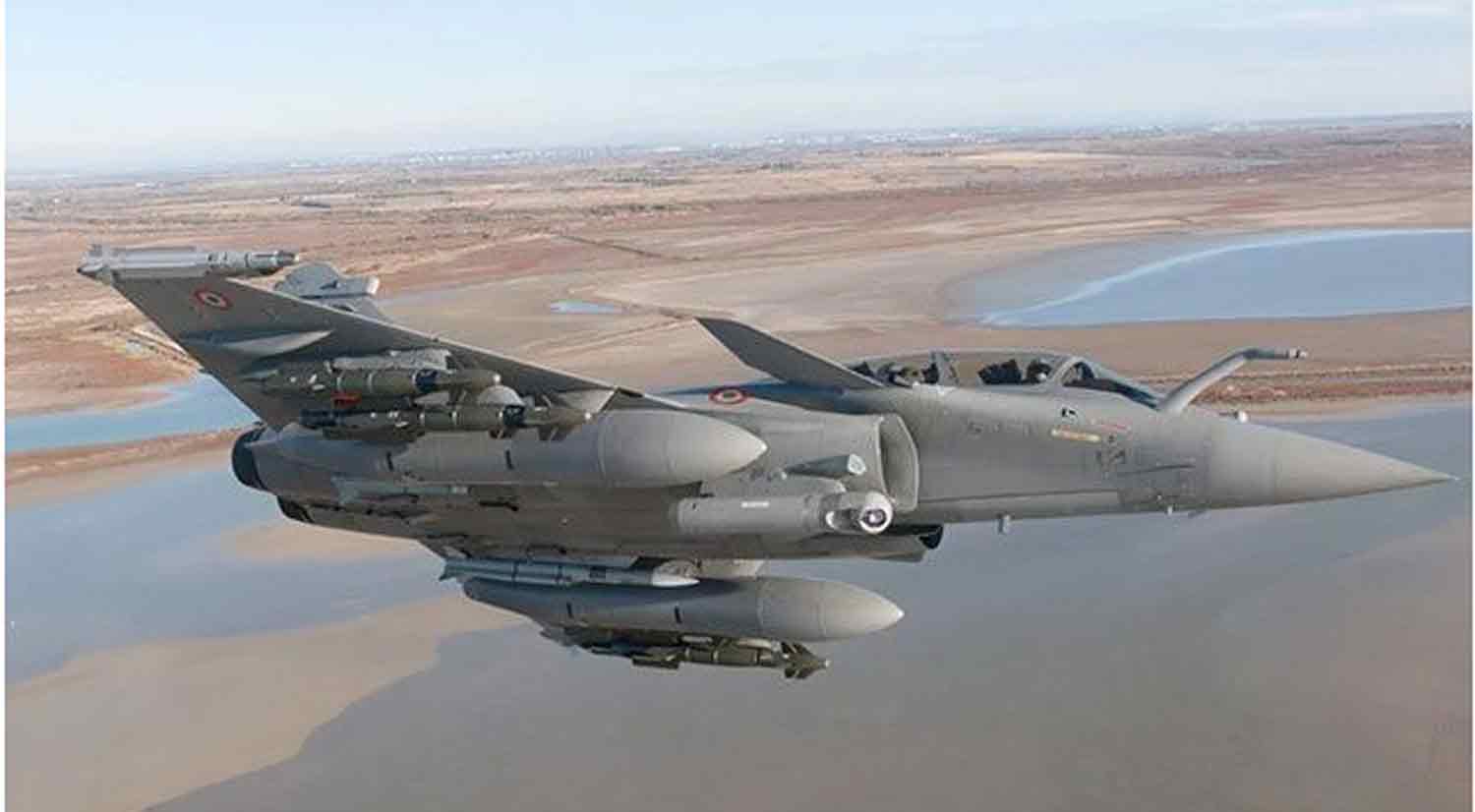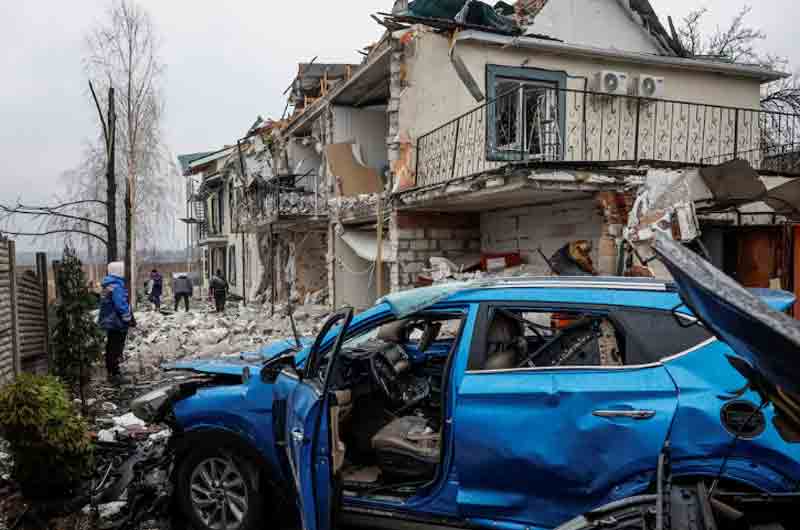France’s Defense Minister, Sébastien Lecornu, has announced a pivotal advancement in enhancing the country’s military capabilities by disclosing plans to procure additional Rafale fighter jets for the French Air and Space Force.
This announcement, made through a post on X, followed President Emmanuel Macron’s address to troops at the Luxeuil-les-Bains air base, where he highlighted the urgency of accelerating France’s defense expansion in light of ongoing threats.
Lecornu emphasized that this initiative is driven by a clear military necessity, indicating a strategic effort to strengthen France’s aerial capabilities amid evolving global circumstances.
This declaration represents a tangible step towards increasing the nation’s fleet of advanced combat aircraft, aligning with broader discussions surrounding defense expenditures and European security.
The rationale behind this decision is rooted in France’s steadfast commitment to fortifying its armed forces. During his speech at the air base, Macron confirmed plans not only to acquire more Rafale jets but also to invest approximately $1.6 billion in modernizing the Luxeuil facility.
This modernization aims to equip squadrons with state-of-the-art nuclear missile technology, particularly the next-generation ASN4G hypersonic cruise missile, which is anticipated to be operational by 2035. The French leader positioned this initiative as a crucial element of the nation’s nuclear deterrence strategy, a fundamental aspect of its defense policy.
Lecornu’s accompanying remarks underscored the urgency of this initiative, asserting that the military must enhance its capabilities to confront persistent threats, a sentiment that aligns with recent trends in France’s defense budget.
In recent years, France has consistently increased its military spending, a trend outlined in its 2024-2030 military programming law, which allocates €413 billion to defense during this timeframe. This marks a significant rise from previous budgets, with annual increases of approximately $3.3 billion planned through the end of the decade.
The recent demand for additional Rafale jets follows a January 2024 order for 42 aircraft valued at $5.5 billion, scheduled for delivery between 2027 and 2032. This agreement, referred to as Tranche 5, has increased France’s total Rafale orders to 234, highlighting a continuous commitment to modernizing its air force.
Experts view this latest announcement as a continuation of that strategy, with projections indicating that the new order may include approximately 40 more jets, although specific figures have not been confirmed. The investment in Luxeuil, along with these acquisitions, emphasizes France’s determination to uphold a strong and independent military stance.
This national initiative aligns with wider European discussions regarding defense funding. Recently, on March 4, the European Commission, under President Ursula von der Leyen, introduced a €150 billion borrowing plan aimed at supporting a significant rearmament initiative across Europe.
Von der Leyen characterized the proposal as a response to a “momentous and dangerous” period, estimating that it could generate up to €800 billion if member states increase their defense expenditures by an average of 1.5% of GDP over the next four years.
The plan, which requires the endorsement of EU governments, emerges amid rising security concerns, particularly in light of Russia’s invasion of Ukraine and the uncertainties surrounding transatlantic relations.
France’s initiatives are in line with this vision, positioning the country as a frontrunner in advocating for European strategic autonomy—a principle that stresses the importance of reducing dependence on external powers for security.
Meanwhile, the United States has played a pivotal role in European defense through NATO, but recent changes suggest a possible shift. President Donald Trump, who resumed office in January 2025, has consistently criticized European nations for relying too much on American military assistance.
The recent decision by his administration to temporarily suspend aid to Ukraine, along with discussions about reducing U.S. commitments overseas, has sparked speculation regarding a potential gradual withdrawal of American forces from Europe.
Although no official plans have been announced, defense analysts point out that around 80,000 U.S. troops are currently deployed across Europe, a presence that has been a cornerstone of NATO’s structure for many years.
France’s initiative to enhance its military capabilities, in conjunction with the EU’s rearmament strategy, may indicate a shift in responsibilities, with European countries preparing to take on a greater share of their defense obligations.
At the center of France’s aerial defense strategy is the Rafale fighter jet, manufactured by Dassault Aviation. Currently, the French Air and Space Force operates 137 Rafales, while the Navy has an additional 41, as outlined in the 2024-2030 military budget, which aims for a total fleet of 178 by the end of the decade and 225 by 2035.
These versatile, twin-engine aircraft are engineered for various missions, including air superiority, ground support, and nuclear deterrence. The existing fleet mainly comprises the F4 standard, introduced in 2023, which enhances operational capabilities with upgraded radar, new air-to-air missiles, and improved self-defense mechanisms.
The order placed in January 2024 will provide jets in this configuration, with an option to upgrade to the upcoming F5 standard in the 2030s. This flexibility has established the Rafale as a key component of France’s military modernization efforts.
The Rafale F5’s development marks the next stage in this progression. Highlighted as a priority by Lecornu and elaborated upon in recent ministry communications, the F5 variant is expected to be completed by 2030. It promises substantial improvements, including a more advanced radar system, enhanced electronic warfare capabilities, and the capacity to carry the ASN4G hypersonic missile.
Notably, the F5 will feature an advanced stealth companion drone, building on the foundation laid by Dassault’s nEUROn demonstrator program. This “loyal wingman” concept enables the Rafale to function in tandem with an unmanned aerial vehicle that can be operated directly from the cockpit, thereby enhancing its operational range and effectiveness in challenging environments.
Defense experts see this development as a stepping stone towards the Future Combat Air System (FCAS), a collaborative initiative with Germany and Spain aimed at creating a sixth-generation fighter by 2040 or beyond. The advancement of the F5 illustrates France’s commitment to staying ahead of emerging threats while ensuring its technological independence.
On the international front, the Rafale has gained significant traction, reinforcing France’s status as the world’s second-largest arms exporter, following the United States. To date, Dassault has secured orders for 261 Rafales from seven countries, including Egypt, India, the United Arab Emirates, and Indonesia.
Additionally, Greece and Croatia have acquired 12 secondhand jets each from France’s inventory. Indonesia’s $8.1 billion agreement for 42 jets in 2022 represented a significant milestone, while India’s ongoing negotiations for 26 Rafale-M variants for its navy, expected to conclude soon, underscore the aircraft’s suitability for carrier operations.
The United Arab Emirates placed an order for 80 F4-standard jets in 2021, valued at over $17 billion, and is reportedly in discussions to co-finance the F5’s development, which could increase its fleet to 100. This “Rafale Club” initiative, proposed by Lecornu in 2023, aims to distribute costs while maintaining France’s oversight of essential components, a strategy that could attract additional partners.
The international aspect highlights the Rafale’s commercial success, prompting Dassault to increase production to meet rising demand. In 2023, the company delivered 13 jets, with plans to double that output to two per month in 2024 and aim for four or five monthly by 2026.
This increase addresses both domestic requirements and export obligations, which are projected to reach $18.6 billion in 2024, primarily fueled by Rafale sales. For nations such as Colombia and Morocco, which are currently seeking to modernize their aging air fleets, the Rafale presents a flexible option compared to American or Russian systems, devoid of the geopolitical constraints typically associated with those alternatives.
However, competition is intense, with Lockheed Martin’s F-35 making inroads in Europe, despite President Macron’s recent appeal to favor European-manufactured equipment over U.S. options.
As France advances with its latest Rafale acquisitions, the ramifications extend across various dimensions. The Luxeuil upgrade, which will make the base the first to accommodate the F5 variant along with its nuclear capabilities, strengthens France’s deterrent strategy amid global uncertainties.
Although the financial investment is considerable, it aligns with the larger €413 billion framework, even as concerns about funding persist in light of efforts to reduce the national budget deficit. Macron has suggested that expediting these orders could help replace Mirage 2000 jets sent to Ukraine, with those aircraft deliveries to Kyiv still anticipated for early next year.
At the same time, the EU’s €800 billion rearmament initiative presents a potential transformative opportunity, dependent on the political resolve and economic collaboration among member states. For the moment, France’s initiatives represent a concrete step toward achieving that objective, balancing national interests with a wider European perspective as the transatlantic alliance navigates a changing environment.
Discover more from Defence Talks | Defense News Hub, Military Updates, Security Insights
Subscribe to get the latest posts sent to your email.





